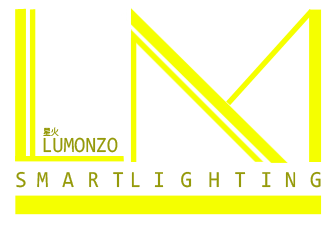LED Backlight Source: A Deep Dive into the Technology and Applications
What illuminates the vibrant colours and sharp images on your LCD TV or computer monitor? The answer lies in a technological marvel called the LED backlight source. This critical component plays a pivotal role in delivering a superior viewing experience. This technology has revolutionized how we perceive digital screens, providing brighter, more efficient, and longer-lasting light. This comprehensive guide is designed to empower you, the reader, to explore the inner workings of LED backlight sources, different configurations, and their impact on display quality. By the end of this exploration, you’ll be equipped with the knowledge to make informed decisions regarding displays and understand the technology powering your favourite visuals, including understanding potential issues such as a flickering LED light. What is an LED backlight source? An LED backlight source, also known as LED backlighting, is a technology used in Liquid Crystal Display (LCD) panels. Unlike self-illuminating displays like OLED, LCD panels require an external light source to function. LED backlights provide this illumination, positioned behind the LCD panel to project light through the liquid crystals, creating the images you see on your screen. How LEDs Work Light-emitting diodes (LEDs) function by passing an electric current through a semiconductor material. This process releases photons, creating visible light. The colour and intensity of the light depend on the materials used in the semiconductor and the current passing through it. Types of LED Backlighting Full-Array Local Dimming (FALD): In this configuration, the LEDs are arranged in an array behind the entire display panel. Individual LEDs or groups of LEDs can be dimmed or switched off to achieve deeper blacks and high contrast ratios. FALD offers the best picture quality but consumes more power. Edge-lit Backlight: Edge-lit backlights have LEDs positioned along the edges of the display panel, typically the top or bottom. A diffuser then spreads the light across the screen. This method is more energy-efficient and allows for thinner displays but may result in less uniform brightness and lower contrast compared to FALD. Applications of LED Backlight Source Consumer Electronics LED backlighting is widely used in consumer electronics, including televisions, computer monitors, laptops, tablets, and smartphones. The technology enhances display quality, making it a preferred choice for manufacturers and consumers alike. Automotive Displays LED backlights are used in dashboard displays, infotainment systems, and rear-view mirrors in the automotive industry. Their durability and ability to operate under various temperatures make them ideal for these applications. Medical Devices Medical devices, such as diagnostic monitors and imaging equipment, benefit from the high brightness and contrast of LED backlighting. These features ensure that medical professionals can view clear and accurate images, which is crucial for diagnosis and treatment. Digital Signage and Billboards LED backlights are also employed in digital signage and billboards, where bright and vibrant displays are necessary to attract attention. Their energy efficiency and long lifespan make them suitable for continuous operation in public spaces. Advantages of LED Backlight Source Energy Efficiency One of the most significant advantages of LED backlighting is its energy efficiency. LEDs consume less power compared to CCFLs, which translates to reduced electricity usage and operational costs. This efficiency makes LED backlights a practical choice for both consumer electronics and large-scale applications like digital billboards, offering not just superior display quality, but also cost savings. Enhanced Brightness and Contrast LEDs can produce a higher brightness level, resulting in more vibrant and vivid images. Additionally, they offer better contrast ratios, enhancing the depth and clarity of the display. This improvement is particularly noticeable in high-definition televisions and monitors. Longevity and Durability LEDs have a longer lifespan than traditional light sources, often lasting tens of thousands of hours. This longevity reduces maintenance costs and the frequency of replacements, making them a cost-effective choice for various applications. Environmental Benefits LEDs are more environmentally friendly than CCFLs, which contain mercury, a hazardous substance. The absence of mercury and the reduced energy consumption make LED backlights a greener option for displays. Future Trends in LED Backlighting Mini-LED and Micro-LED Technologies Mini-LED and Micro-LED are emerging technologies that promise to enhance display quality further. Mini-LEDs are smaller than traditional LEDs, allowing for more precise backlighting control and improved picture quality. Micro-LEDs, on the other hand, are even smaller and can be used to create self-emissive displays, eliminating the need for a separate backlight. Quantum Dot Enhancement Quantum dots are tiny semiconductor particles that emit light when stimulated by an external light source. When combined with LEDs, quantum dots can improve colour accuracy and brightness, leading to superior display performance. This technology is already being used on some high-end televisions and monitors. FAQs Q: Do LED backlights flicker? A: Traditional LED backlights with pulse width modulation (PWM) dimming can exhibit a flickering effect at certain brightness levels, particularly noticeable to people with sensitive eyes. However, advancements in dimming techniques like flicker-free dimming have minimized this issue in modern displays. Q: How long do LED backlights last? A: LED backlights typically boast a lifespan of 50,000 to 100,000 hours, significantly longer than CCFL backlights. This translates to many years of use before needing replacement. Q: Can I replace the LED backlight in my display? A: Replacing the LED backlight in a display can be complex and requires technical expertise. It’s often more cost-effective to consider purchasing a new display, especially for older models. However, replacement kits and repair guides might be available for specific displays with some DIY know-how. Q: Are LED backlights recyclable? A: While some components of LED backlights can be recycled, the process can be complex due to the presence of various materials. It’s recommended to check with your local electronics recycling centre for proper disposal guidelines. Q: What are some considerations for wall-mounting a TV with an LED backlight? A: When wall-mounting a TV with an LED backlight, ensure sufficient space behind the display for proper ventilation. Due to the placement of LEDs, edge-lit displays generally require less space than FALD models. Always follow the manufacturer’s recommendations for wall-mounting your specific TV model.
LED Backlight Source: A Deep Dive into the Technology and Applications Read More »

